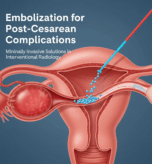Every time you think about drinks, a cold beer to be enjoyed at dinner, a glass of wine with friends, or a pie-in-the-sky celebratory toast, one question remains: how much is really safe? We believed for years that moderation made drinking innocuous. But health research today cuts through the insanity of anyone suggesting even one drop of a drink is entirely safe.

The New Medical Consensus: No Safe Limit of drinks
The World Health Organisation (WHO) warns that no level of drinking is truly safe for our health. Even small or moderate drinks raise the risk of serious conditions. Studies reveal that light or occasional drinks do not offer protection — instead, dangers like cancer, cardiovascular disease, and liver damage increase even with low intake (Mayo Clinic). A major meta-analysis involving millions of people confirmed that the risk of premature death rises steadily with drinks, even at amounts once considered ‘safe’ (PMC).
Why Doctors Warn That “Moderation” Is Deceptive
- Carcinogenic properties: Alcohol is classified as a Group 1 carcinogen. It’s implicated in at least seven types of cancer, including bowel, breast, and liver cancer. (World Health Organisation)
- Heart & circulation: Even moderate alcohol consumption can raise blood pressure, lead to an arrhythmia (e.g., atrial fibrillation), and worsen the risks for heart disease.
- Even light drinking raises blood pressure and can predispose one to arrhythmias (including atrial fibrillation), as well as complicating the impact of such consumption on cardiovascular risk outcomes.
- Brain and cognitive health: Those who consume alcoholic drinks often, regardless of quantity, will most likely also experience greater brain ageing and brain volume loss over time. (Wikipedia)
- Dose and pattern matter: Not just how much, but how often you drink. Bingeing or regular daily drinking is far riskier than occasional, very light use.
What Does “Safe Limit” Of Drinks Mean — If Anything?

Since there is no risk-free amount, medical advice now leans toward minimising alcohol rather than aiming for a “safe” level. But people often want approximate guidance, so here are some guidelines and considerations:
| Factor | Approx Guideline / Observations |
| Former guidelines | Some guidelines allowed up to 1-2 standard drinks/day (varied by country, sex) |
| Health-risk studies | Even 1 drink/day raises risk of certain cancers (breast, colorectal) (NIAAA) |
| Best practice | If you drink, keep the frequency low; avoid binge patterns; try for several alcohol-free days per week |
Role of Individuals & Vulnerable Groups in Drinks
Not everyone experiences the same risk. Some people are more vulnerable:
- Though the presence of any of the above risk factors would predispose a person to liver disease at the outset, they are more likely to develop liver disease sooner rather than later. These were mainly liver diseases, and murder cases were equally intense.
- Kids whose parents have a family history of liver disease, cancer, or heart disease.
Young women and girls with fetal alcohol spectrum disorder (FASD) have undergone fetal development and brain growth that have been disrupted by alcohol.
Ageing conditions such as morbid obesity and hypertension - Women often have greater harm at lower amounts, due to body size and alcohol metabolism differences (NIAAA)
- Those with a family history of liver disease, cancer, or heart disease would be those without a bona fide baseline – comorbidities, obesity, and hypertension. Those would be those people with bad baseline health: comorbidities, obesity, and high blood pressure. The age group for special removal is: Very young and pregnant women, who cannot go without alcohol because it interferes with fetal brain and growth development.
What Dr Vrishit Saraswat Suggests
Dr Vrishit Saraswat’s approach towards drinks, especially in his practice of image-guided, minimally invasive treatments, emphasises prevention and precision. At our clinic the philosophy is that caring for vascular health, circulatory health, and organs like the liver and heart is not only about treating disease — it’s about reducing risk factors.
Some of the preventive advice Dr Saraswat supports:
- Regular screenings of heart and liver function, especially if there is a history of alcohol use
- Preferring non-alcoholic lifestyle choices (mocktails, social options without alcohol)
- Good nutrition, exercise, and rest — these reduce body stress and help detoxification
- Early damage detection using minimally invasive diagnostic procedures like imaging is what Dr Saraswat’s clinic specialises in. Image-guided treatments and virtual consultations are among his services, found under “Home” on his clinic website.
Practical Tips: Reduce Harm Even If You Choose to Drink
If you aren’t in a place yet to stop drinking altogether, here are harm reduction strategies:
- Limit the number of drinking days per week – having several alcohol-free days helps reduce cumulative damage.
- Stick to one standard drink or less per occasion when you do. Know what a standard drink is in your country.
- Avoid binge drinking – no more than one or two drinks at once; avoid heavy episodic drinking.
- Hydrate and eat well – food slows absorption, and hydration helps reduce some negative effects.
- Regular checkups – liver function tests, imaging when needed (this is where Dr Saraswat’s clinic offers minimally invasive diagnostics).
What to Do If You’re Concerned
If you’re worried about what alcohol may be doing to your body:
- Talk to a physician who can assess your individual risk (family history, lifestyle, medical conditions).
- Consider stopping alcohol completely, at least for some period, to see how your body responds.
- If full abstinence is hard, use reduction strategies (cutting down, avoiding drinking on stressful occasions).
Key Takeaway
The healthiest stance is to minimise alcohol consumption as much as possible. No magic amount is completely risk-free. Every drink carries some burden. As medicine advances, the data gets clearer: reducing alcohol consumption improves long-term health in the heart, brain, and liver, and reduces cancer risk.
FAQs Related to Drinks
1. What is the 1-2-3 rule for alcohol?
The 1-2-3 rule suggests 1 drink for women, 2 for men, and not more than 3 at a time. But shocking new research shows no alcohol is truly safe, even in “moderation.”
2. Is drinking 180 ml of whisky daily good?
Absolutely not. Drinking 180 ml of whisky daily is a dangerous habit that can cause severe liver damage, heart strain, and alcohol dependence—a powerful reason to stop.
3. What are 10 positive effects of alcohol?
Alcohol may bring short bursts of relaxation, confidence, or mild social comfort. But the hidden truth is these fleeting “positives” are quickly outweighed by life-threatening risks.
4. How long does alcohol stay in your system?
Alcohol lingers in your system—up to 12 hours in blood, 24 hours in breath, 48 hours in urine, and 90 days in hair. A powerful reminder that even one drink can leave lasting traces.






